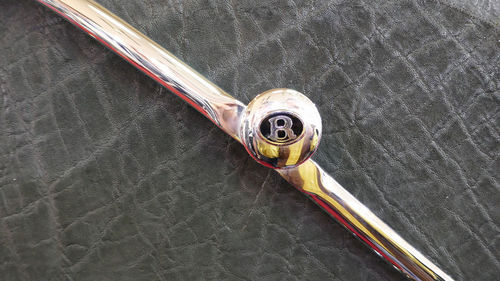Elephant leather
Contents
Elephant skin - Elephant leather
Elephant leather was a highly sought-after material for luxury goods, particularly travel trunks and bags, in the late 19th and early 20th centuries. Its high cost and rarity made it a symbol of status and wealth. The leather was obtained from the skin of elephants hunted in Africa and other parts of the world, and its exceptional durability made it very popular.
However, the hunting of elephants and the use of elephant leather had serious impacts on elephant populations, and it was eventually banned in many countries. Elephants are now protected worldwide, and the trade of elephant leather is illegal. Although elephant leather is no longer commercially available, products made from historic elephant leather are still collectors' items and are sometimes sold at auctions or antique shops.
In many African countries, belts, bags and other accessories made of elephant leather are offered for sale. The WWF advises tourists not to buy these products.
In Namibia and South Africa trade in elephant leather and hair products has been allowed since 2004. Whilst these items can be imported into Europe, there are strict rules and regulations that need to be followed. It is prudent to research and obtain all necessary documents required to clear customs. For example, CITES documents are required to export any such items from South Africa, Zimbabwe and Botswana. Tourists must therefore research and speak to the relevant authorities to ensure the appropriate documentation is obtained upon purchase.
Elephant leather has pronounced skin folds.
Elephant leather is occasionally found in Europe due to the various activities of big game hunters. The elephants are poached in Africa where their skin is tanned. The skins are then transported to Europe to be processed.
Occasionally, furniture or shoes are marketed as "elephant leather". However, it is very rarely real Elephant Leather. In most cases, it's normal cow skin leather with a particularly strong grain or embossing which resembles genuine elephant leather.
Especially with online stores it is not explicitly stated that it is not real elephant leather. It is always better to ask and make sure what it really is. Normally, leather dealers don`t offer elephant leather.
Elephant leather has a strong grain patter.
Objects made of elephant skin
From another time: A convertible top from Bentley made of elephant leather.
Bag made of elephant leather seen in the DLM - German Leather Museum at Offenbach.
Bespoke shoes made of elephant leather from Jacob, F. Shoes.
Leather watch strap made of elephant leather of an old handbag from the 20s. The leather is shrunken skin of elephant ears and made of elephant leather from the body of the elephant.
Ancient stool made from an elephant's foot with obvious signs of ageing..
Embossed leather with elephants look
Occasionally cowhide is provided with an embossing in elephant leather look.
Cowhide with elephant embossing.
Video about leather of different animal species
Leather of different animal species - Exotic leather
More exotic leather
- Alligator leather
- Alpaca fur
- Antelope leather
- Armadillo leather
- Bird leather
- Bull testicles
- Caiman leather
- Camel leather
- Carpincho leather
- Cat fur
- Chicken leather
- Crocodile leather
- Dog leather
- Donkey leather
- Fish leather: Eel, shark, salmon, moray eel, stingray and many others
- Frog leather - Toad leather
- Giraffe leather
- Hippo Leather
- Horsehide - Horse leather
- Kangaroo leather
- Llama Fur
- Lizard leather
- Ostrich leather
- Pangolin leather
- Peccary leather
- Rumen leather
- Sealskin leather
- Snakeskin
- Turtle skin
- Walrus leather
- Yak leather
- Zebra hide



























 a kotori web solution
a kotori web solution